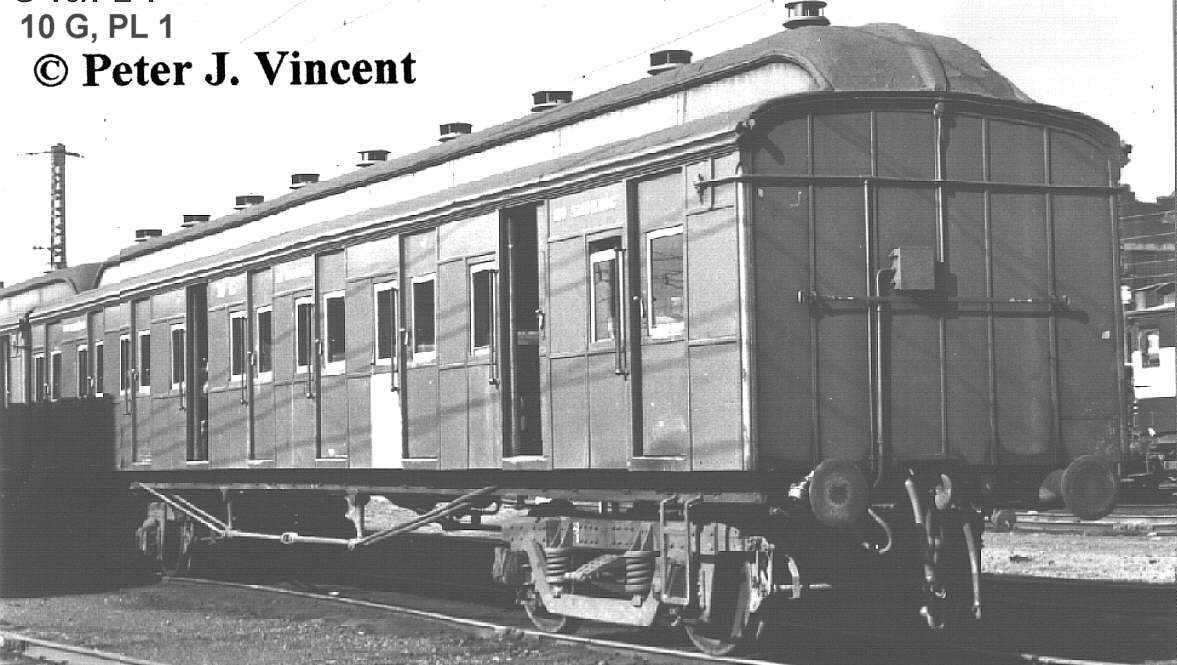

By 1917 the railways had planned to use surplus carriage underframes for a new type of excursion car. The underframes were leftover when older swing door carriages were placed onto new underframes that could be fitted with traction equipment. The new excursion cars were coded APL_ / BPL_. Originally 224 excursion cars were planned but there were only 140 or so underframes available.
By 1923, construction started on new excursion cars to complete the project. The cars were built as dual purpose to cater for the seasonal nature of holiday traffic and special events. The cars were built for suburban traffic and were electrically lit. For country and loco hauled use, the cars were gaslit.
For suburban use they were placed in seven car train sets. At holiday times, those trains were reduced to six car sets and the cars transferred to country service.
The cars were classed G and were numbered 1 - 103.
In 1923, the swing door electric car conversion had been suddenly stopped. Several underframes had already been built for the swing door _M__ use. These underframes were placed under G cars. As these underframes suited a longer bogie, the bogie centres were different which made these cars somewhat different. Another visual clue was the very narrow underframe under a wide body.
Another feature of the cars was a shunters' emergency brake. The cars were placed on the west end of East End units. A 'unit' being M-T or M-T-G. For off peak use, the unit was detached from the 'Block', an M-T-T-M set. At the start of peak traffic the 'unit' was reversed back to the platform; the driver at the east end and a shunter at the doorway of the west end car. As the shunter was unable to stop the car movement in an emergency situation a 'shunter emergency valve' was provided at the car end. It was piped from the brake pipe at the car end and went to the side door nearest the end for shunting. This feature was added in 1925 and was initially a temporary one until such time as driver shunting controls were provided. However by the late 1920's the feature proved safe enough that driving controls were no longer required. The feature of shunters taps was also fitted to Harris cars when they arrived. For normal service and shunting at Flinders Street, these taps were used up until the late 1960's. Their use was then for workshops shunting or emergencies as required.
In the early 1970's, several Tait cars were fitted with fluorescent lighting. The additional equipment to run the lighting was fitted at one end on the outside of the car.